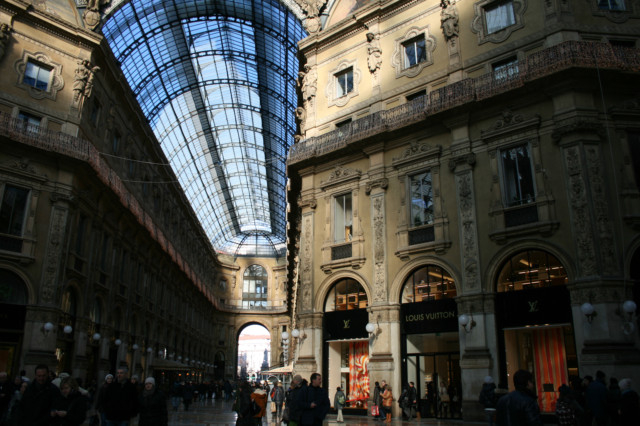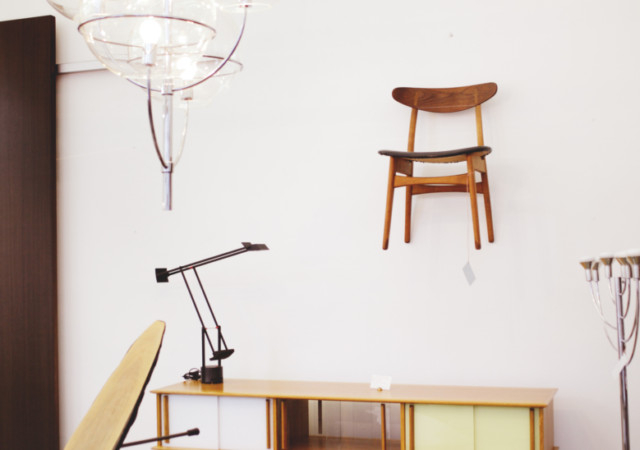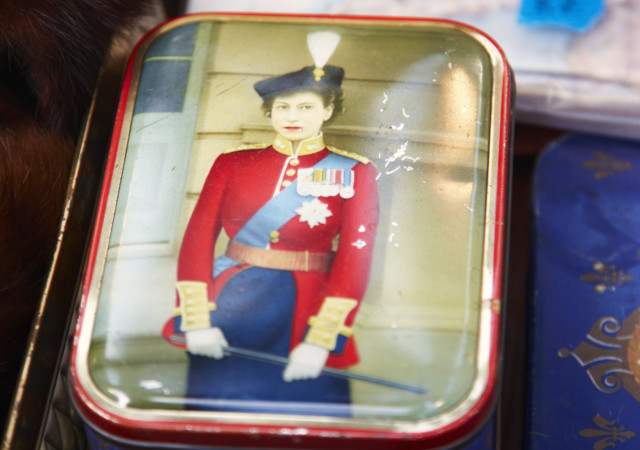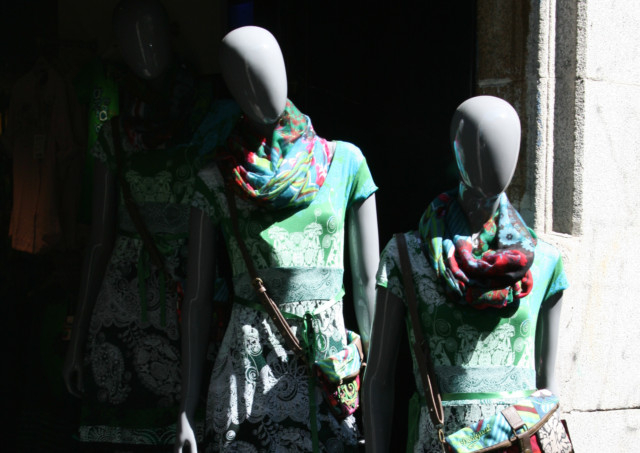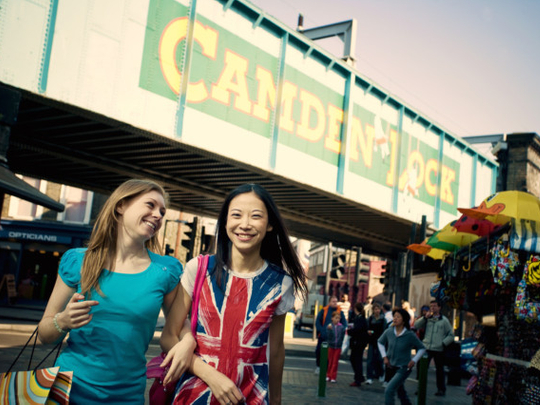
MILAN — ONE BIG CATWALK
Although Italy’s most industrialised and business-orientated city is somewhat of a sprawling giant, for the visitor it is more than manageable with all the exclusive fashion boutiques neatly encased in what has become known as “The Golden Quadrangle”. The area is bordered on the west by Via Montenapoleone and the east by Via della Spiga, with Via Alessandro Manzoni and Corso Venezia as the north and south borders respectively.
This entire area is packed with credit-card-draining goodies and the names read like a “Who’s Who” of haute-couture. Chanel, Armani, Yves Saint Laurent, Helmut Lang, Prada, Valentino, Dolce & Gabbana, the list goes on and on. They all try to outdo each other with lavishly decorated interiors, in-shop cafés, shop assistants who look like they just stepped off the catwalk and dazzling fashions with prices not for the faint of heart.
Start your shopping spree at Gucci at 5 Via Montenapoleone before moving on to Jimmy Choo at 1 Via Sant’Andrea. Then try Roberto Cavalli at 52 Via della Spiga. You’ll need some new luggage to carry it home and help is at hand at Louis Vuitton at 2 Via Montenapoleone.
Unlike typical Italian shops, which close from 12.30 to 3.30 in the afternoon when the owners have a leisurely lunch and perhaps a nap, the work orientated Milanese would never allow the opportunity for a sale to slip by. Most of these boutiques stay open the entire day.
The area around the Duomo is also where you can pop into the magnificent four-armed shopping arcade La Gallaría Vittorio Emanuele. Built in 1867 by royal command, it has some of the most exclusive shops and cafés in the central city area. The grand scale and detail of this beautiful building is impressive. In between ogling at the designer clothes, look down at the beautiful marble and mosaic floors or up to the stained-glass dome.
La Gallería is affectionately known as Milan’s sitting room. It’s a favourite place for locals to meet and catch up before or after hitting the boutiques. Big names such as Prada and Armani all vie for your spending power. Caffé Zucca en Galleria opened along with the main building in 1867 and is the favourite place for an after-work snack for many people working in the fashion industry in the area.
MADRID — YOUNG AND TRENDY and trendy
There’s an explosion of summer flare in the fashion business in Madrid with exciting clothes for urban, day and evening wear, available in many of the smaller boutiques. Head to the pedestrian street, Calle Fuencarra, and the small streets which run off it are all jam-packed with fun stuff to have you looking like a million dollars.
The tree-lined Calle Fuencarral is crowded throughout the day with those keen to add something original to their wardrobe. Fashion stores are conveniently interspersed with modern restaurants and cafés where you can refuel or get a caffeine-packed coffee to get you going.
Big on this fashion strip is Desigual at number 36. With fabulous fashions for both him and her, the super-trendy Spanish brand is characterised by contrasting colours, overstitching and appliqués. Step out in style in some casual summery shoes from Vas at number 33 or, for the modern man, make a statement in some eye-catching threads in dazzling hues at El Ganso at number 2.
Make sure you find time to pop into Sant Honoré in nearby Calle Augusto Figueroa to stock up on designer dress shoes for him and her at really great prices.
LONDON — SHOP UNDER THE SUMMER SKY
Summer is the best time to enjoy the highly colourful open-air markets that are scattered across London. Those in search of antiques, curiosities and funky clothes will be spoilt for choice with opportunities for original purchases aimed to make you stand out from the crowd.
Camden Market (www.camden-market.org) is a sprawling mélange of smaller interconnected markets, and this variety of merchandise offers a real smorgasbord of street culture which should not be missed. Join the throng of tourists, locals and celebrities fighting it out at the vast and varied selection of shops and stalls. Saturdays are not for the faint-hearted, with crowds craving lava lamps, funky jewellery, urban fashions, music and vintage items swarming about.
Although weekdays are quieter, weekends are better for variety and atmosphere. Camden Market is the place to snap up bargains on cut-price jeans, T-shirts and highly original fashion accessories. Down the road the Stables Market offers vintage threads alongside quirky crafts and antiques. A few streets away at the pleasant waterside Camden Lock you’ll find everything from designer hats and children’s clothes to Japanese tableware and multicultural food stalls.
Portobello Market (www.portobellomarket.org) is penned in by Notting Hill Gate tube station at one end and Ladbroke Grove tube station at the other. The stalls’ wares change focus as you move further down the road. From Notting Hill Gate, start the journey with amazing antiques, and further down you’ll find emerging designers’ gear and vintage threads. Most of the food stalls are open seven days a week but the market comes alive Saturday and Sunday when the antiques and vintage traders pitch up and spread their glorious collections out on to the footpaths.
London’s famous Covent Garden Market (www.coventgardenlondonuk.com) is a real institution providing a retail experience full of character. The colonnaded 19th-century Piazza building is where tourist-friendly crafts are the staple. Choose from hand-painted watercolours, wooden children’s toys, handmade soaps and clothes. Mondays are best for antiques lovers while Tuesday to Friday sees a general market with clothing and household goods all ready to be snapped up.
VIENNA — ORIGINAL RETRO AND DESIGN FURNITURE
In Vienna, design has been a tradition for centuries. Those looking for innovation in furniture and homeware will find everything from exceptional and highly collectable Art Nouveau pieces, retro 1950s’ designer furniture to some of the most cutting-edge contemporary items around.
In the streets between Mariahilfer Strabe and Naschmarkt are numerous small shops waiting to be discovered while out walking. Try Mortons Art Palace (www.morton.at) for retro pieces and Austrian antiques. The area between the MuseumQuartier and the Gumpendorfer Strabe also offers great furniture shops. Lichterloh (www.lichterloh.com) specialises in collectable furniture from the mid 20th-century. It’s where to go to buy classic items from designers Arne Jacobsen and Carl Auböck.
The Viennese café Das Möbel (www.dasmoebel.at) is not only a furniture and design shop but also a place to enjoy some real Viennese coffee and apple strudel. Start your day with a traditional breakfast and relax in one of the many different designer chairs. The furnishings change on a regular basis providing excuses to return often. You can buy accessories and smaller pieces at the café. However, customers who are looking for larger furniture can head to Möbel’s larger shop in the 6th district.
ISTANBUL — SHOP ’TIL YOU DROP
Dating back to 1460, and with over 5,500 stalls, the Grand Bazaar makes finding what you are looking for a dream. More than just a shopping trip, a visit to what was the world’s first mall is a cultural experience. Not only does the Grand Bazaar house shops, but this mini city has two mosques, four fountains, two hammams, a school and many restaurants and cafés, which serve the 15,000 plus workers and their families with their daily needs.
Shopkeepers in this massive market in the centre of Sultanahmet district cajole and entreat passers-by in a dozen languages, determined not to permit visitors to indulge in such a non-commercial activity as “just looking”. Remember, you’re not dealing with sales clerks here but most likely the owners themselves who depend on the income to support their families.
Fortunately, the perception that hardcore hustling is bad for long-term trade has finally started to sink in among the bazaar traders. Visitors today will find the Grand Bazaar a kinder, gentler place than it was years ago. There are over a dozen main gates into the Grand Bazaar, and at least five of them open on to Kalpakçılar Caddesi, an opulent east-west thoroughfare lined with gleaming jewellery shops filled with gold and precious stones.
Inside the bazaar you’ll find a network of 60 main thoroughfares, cross streets and smaller lanes all jam-packed with tempting merchandise. Helping make things a little easier, similar goods are grouped together in areas. There are sections devoted to gold, the famous Izmir ceramics, Turkish carpets and kilims, clothes, leather goods, spices and antiques.
Shopping in the Grand Bazaar is fun but remember to bargain before you make a commitment to buy. Bargaining is an essential part of shopping and culture in Turkey and requires patience, a good temperament and skill. Remember to keep smiling all the way through the process. Start with an offer well below what you are prepared to pay and work up to your final offer.
Scott Adams is a Madrid-based freelance writer


